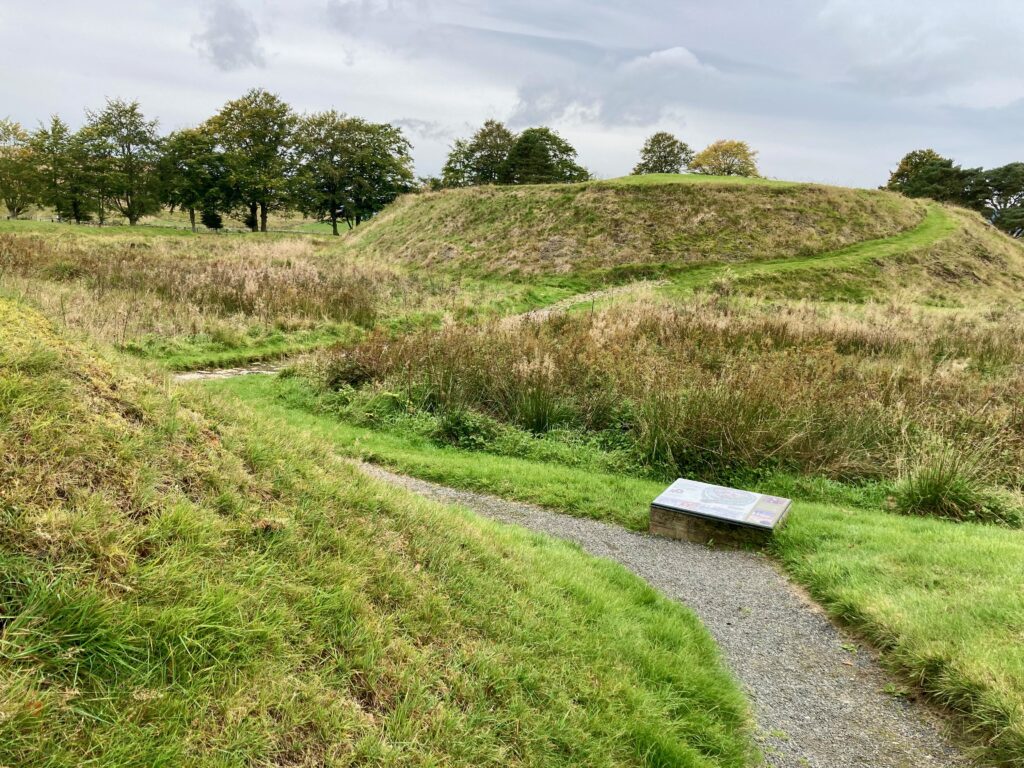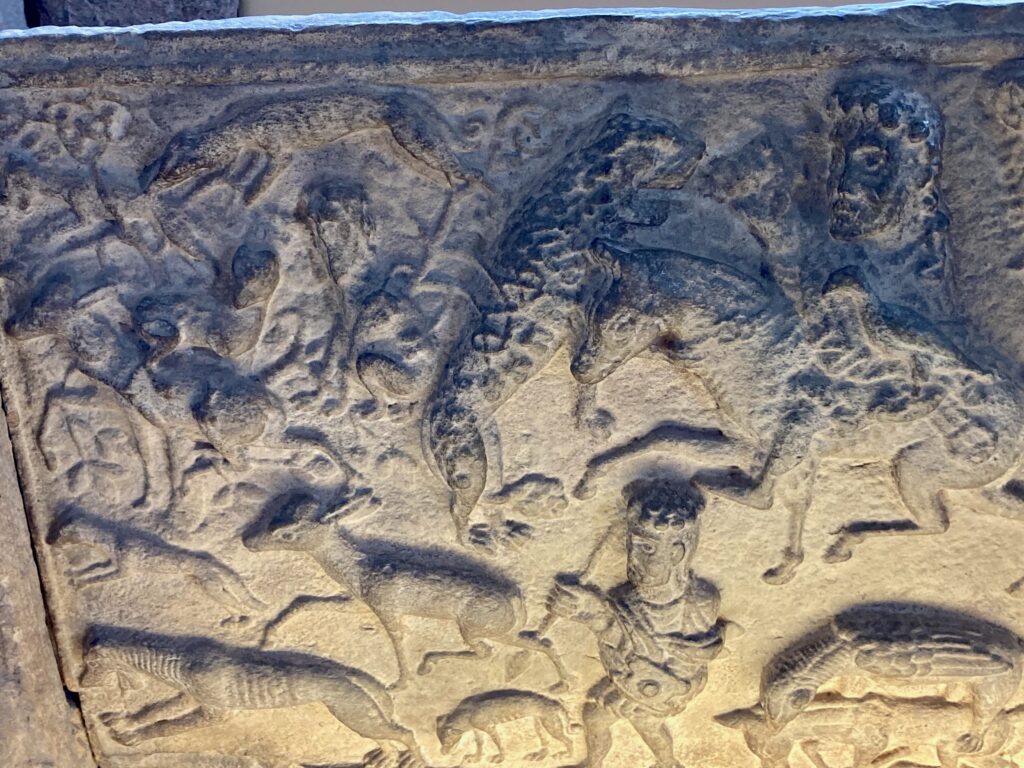By Valerie Nieman

Not much to look at, these two mounds covered with windblown grass, but they tell of the fate of nations, the death of kings.
Beside Iona’s abbey church rises Reilig Odhráin, a burial mound where kings of Pictland, Scotland, Ireland, and Norway were interred—60 by one account—along with other notables. Among them is Macbeth, whose reign extended from 1040 to 1057, a rightful king and the last of those acclaimed in the Celtic tradition, not the usurper we know from Shakespeare’s play. I was on the holy island in 2014, midway in a long journey to write the story of the king and his wife Gruach, of whom we know little more than her name. Upon the Corner of the Moon: A Tale of the Macbeths will be published in spring 2025 by Raleigh-based Regal House Publishers. The first of two books, it’s the story of a clash between old and new and the creation of Scotland itself.
As I’d seen the gravesite in 2014, I had to visit the place of the last battle—not Dunsinane but Lumphanan, where Macbeth is believed to have died, though some chroniclers say he was wounded only, and escaped to die at Scone. This site, and others linked to the story including a well and a cairn, is located near the beautiful River Dee in Aberdeenshire.

On my research trip in fall 2023, I stayed at Cambus O’May, a Victorian hotel on the former Deeside Rail line from Aberdeen to Ballater. Tracks that once carried royals on their way to Balmoral are now a rail-trail through birches and bracken. I had no car, so I called a taxi that took me to where the “Peel of Lumphanan” rises in a cow pasture. While the driver waited, I walked down the lane and up a curving path to the top of the grassy knoll. Remnant turf and stone fortifications are of later date, but surely this hill overlooking the fertile fields would long have been used, built and destroyed and rebuilt.
Little remains of 10th and 11th century Scotland, caught between the destructive Viking incursions and the arrival of William of Normandy on English shores. Iron Age brochs endure along northern coasts. The legacy of the Picts amounts to place names (beginning with Pit- for instance) and enigmatic symbol-stones. The remains of early medieval halls and hill forts, however, were often robbed for building stones and plowed under. Though traces are faint, they mark a pivotal time as the peoples of Scotland were drawn together by Malcolm II and his grandson Macbeth to form the nation called Alba.


I began my research back in the days of interlibrary loans and have continued it through the Internet, but feel a real need to see the landscape and put my hand on traces of the past as I did on a Pictish gravestone at Elgin Cathedral. In 2014 I solo hiked the Great Glen Way and sailed to the farthest Orkney island. In 2023 my travels were less strenuous, from Glasgow to Edinburgh to the Black Isle, with lots of time at the national libraries and many museums. Scotland is well known for its dramatic Highlands, grand castles, and Jacobite wars, but there is a strange and compelling earlier history that waits to be encountered as well.
Valerie Nieman is a SCOT member from Rockingham County. She is the author of several novels and books of poetry.

